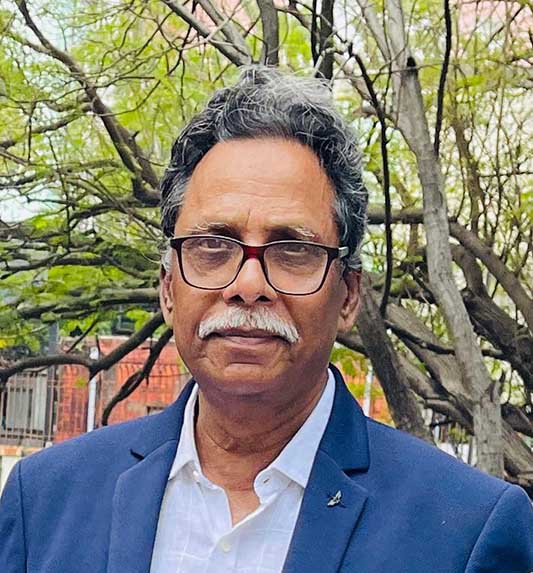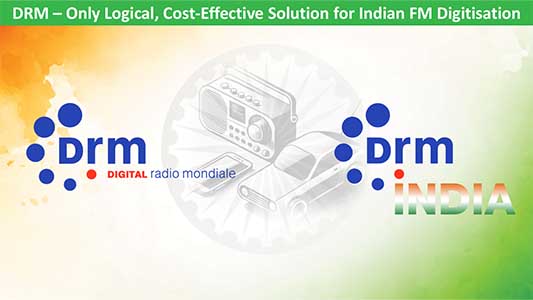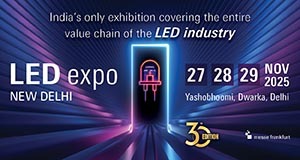India already has a future-ready digital radio solution – it’s called DRM (Digital Radio Mondiale).
In response to the recent article in your Electronic Era, https://electronicsera.in/xperi-unveils-vision-to-transform-indias-radio-ecosystem/ I want to highlight the real and unique benefits of the global DRM standard and why it fits perfectly in the India radio and digital landscape.

Open Standard
DRM is an open standard, the only global standard used across all broadcast bands (MW, SW, FM/VHF). DRM, endorsed by ITU and ETSI, does not require per-use fees or licensing from a single foreign vendor. With DRM, Indian broadcasters remain in full control of their broadcast future – not tied to a closed, proprietary ecosystem.
The DRM Digital Radio Mondiale standard and its components such as audio codecs and standardised multimedia applications (“DRM technology”), are open technologies and fully publicly specified for free access by everybody. Therefore, no broadcaster or manufacturer is required to sign upfront license contracts to gain access to those technologies or to start implementing them.
For broadcasters, the use of DRM comes without upfront or annual license fees. Furthermore, DRM imposes no revenue sharing obligations, allowing broadcasters full flexibility and control over their offerings.
(More information at: ipr.drm.org).
Spectrum Efficiency
India, like most of the world, allocates only 200–300 kHz to FM and not the 400kHz channel spacing used in the US. DRM was developed as an open standard by global broadcasters for international use. This also means full compatibility with India’s 200 kHz analogue FM allocations.
DRM uses half the FM analogue spectrum and can deliver up to 3 audio programmes plus data services in 100 kHz or up to 6 audio + 2 data services in 200 kHz. niquely, multiple DRM blocks (6-8) can be transmitted from one shared transmitter, enabling multiple broadcasters to operate side by side with separate content and full control, while saving on infrastructure, power, and cost (DRM Multichannel). This can mean up to 18 audio programmes and 6 data services run for up to 6 independent broadcasters all from one single DRM transmitter. Broadcasters can save dramatically on both CAPEX and OPEX as was successfully demonstrated in Delhi and Jaipur a few years ago.

Up to 6 DRM signals (18 Audio + 6 Multimedia Journaline services)
side-by-side from the same transmitter – source: drm.org
Energy savings by using DRM in the FM band amount to almost 90%, savings that can be used to improve existing programmes or create new content for listeners.
True Simulcasting DRM / FM
DRM enables true Simulcasting: automatically switching between digital and analogue alternative frequencies for same service (using DRM’s AFS mechanism – Alternative Frequency Signaling & Switching). DRM keeps listeners on the network while travelling, ensuring smoothtransitions between the two signals (analogue and digital). This guaranteesan uninterrupted listening experience, whether users receive the analogue or digital version of the service.
DRM is On Air in India Already
DRM is already live across India with programmes aired by All India Radio covering some 900 million people with their 41 DRM medium wave (and shortwave) digital transmitters and excellent sound and data. Over 7 million cars on Indian roads support DRM reception today. Prestigious global and Indian chipset, module and car and desktop receiver manufacturers have showcased their advanced DRM solutions during the recent WAVES and BES exhibitions in Mumbai and Delhi respectively.
India Needs One Standard – Not Fragmentation
India has already adopted DRM for medium wave and shortwave. Extending DRM to FM is the next logical and cost-effective step. Using one open digital standard nationwide ensures seamless interlinking, investment protection, a better user experience, less energy consumption, an important stimulant for receiver production and more revenue possibilities. Introducing a second, completely different, proprietorial digital standard would increase costs, confuse both broadcasters and consumers and delay digitisation.
Innovation
- DRM can be enabled on existing mobile phone chipsets – the same used for analog FM. A free app and a software update are often all it takes. No new hardware is needed. Bluetooth and USB dongles are already available for legacy devices. And manufacturers are ready to scale, once India confirms DRM as the FM digital standard.

Smartphone with DRM reception – source: drm.org
- DRM digital radio offers additional data features such as Journaline, SlideShow, etc, which can be used in many languages while complementing the audio with text and graphics (subtitles, additional info, ads, etc.). Such features are used for Public Signage in bus stops, stadiums, town squares for advertising or for use of the embedded DRM emergency alert system in case of disasters, the Emergency Warning Functionality (EWF). This service has been a pull factor for broadcasters globally and for those in India. The latest new service of DRM is distance education (e-Learning), recently tested and demonstrated successfully in Africa.
Conclusion
India’s radio future deserves clarity, efficiency, and fairness. DRM is already here, already working, and already delivering.
DRM is open, flexible, scalable, and tailored to India’s unique needs and what we need is the decision of the government so that India can bring radio in the digital age and make it in India.













